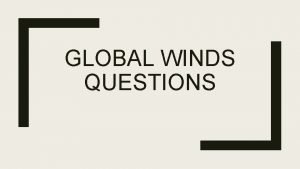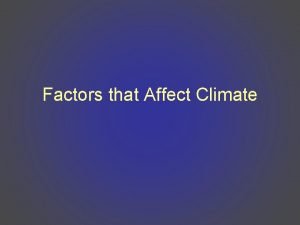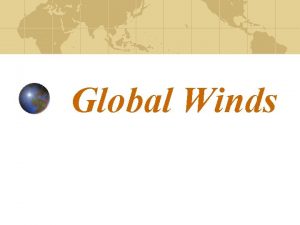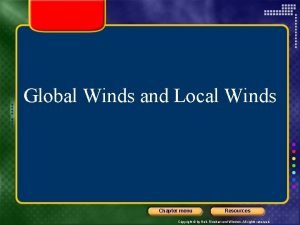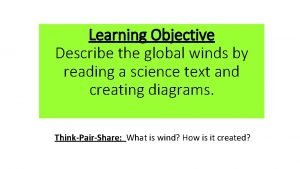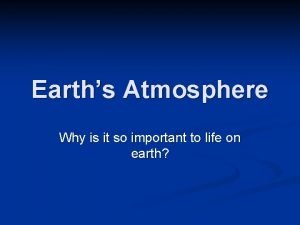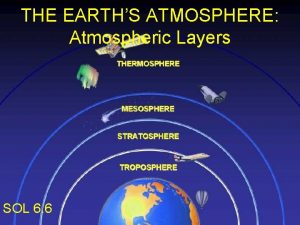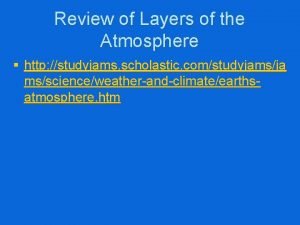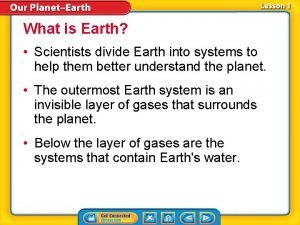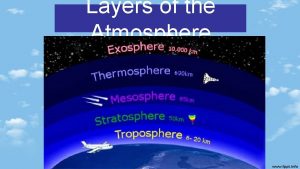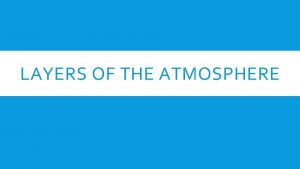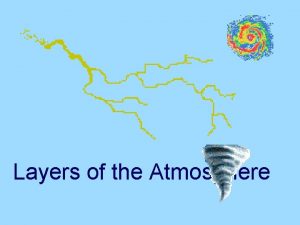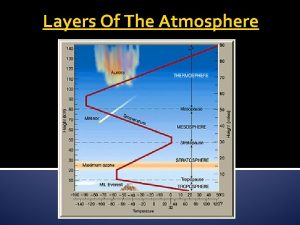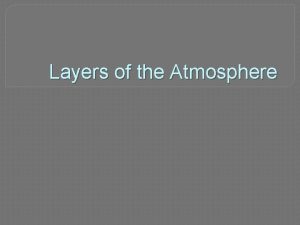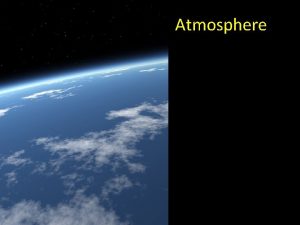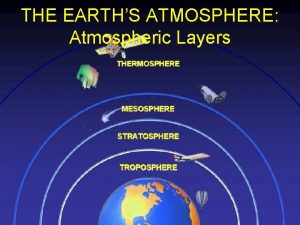Atmospheric Layers and Prevailing Winds Atmosphere Air and











- Slides: 11

Atmospheric Layers and Prevailing Winds

Atmosphere • Air and moisture surrounding Earth. • Density decreases further from Earth’s surface. • Composed primarily of nitrogen gas (78%) and oxygen (21%).

Atmospheric Layers Troposphere • Closest to Earth’s surface. • Responsible for weather systems. • As altitude increases, temperature decreases.

Atmospheric Layers Stratosphere • Dry layer. • Contains highest concentration of ozone protects Earth from solar UV rays.

Prevailing Winds • Large-scale winds. • Caused by: – Convection Currents. – Earth’s eastward rotation (Coriolis effect).

Convection Currents • Transfer of thermal energy within fluids (liquid or gas). • Cooler, denser fluid falls and pushes warmer, less dense fluid up. • Convection currents in air and oceans move thermal energy around the Earth.

Atmospheric Convection Currents • Thermal energy absorbed by air unevenly distributed.

Atmospheric Convection Currents • • Air at equator heats up and becomes less dense. Colder, denser air above drops. Pushes warm air up creates low pressure. Warm air spreads toward poles, cools down and drops back down creates high pressure.

Atmospheric Convection Currents H L H

Coriolis Effect • Earth’s eastward rotation causes large air and ocean masses to appear to change direction.

Coriolis Effect • Northern Hemisphere: – Earth appears to rotate counterclockwise. – Air/ocean masses appear to deflect to the right. • Southern Hemisphere: – Earth appears to rotate clockwise. – Air/ocean masses appear to deflect to the left.
 Which factor causes global wind patterns?
Which factor causes global wind patterns? How do prevailing winds affect climate
How do prevailing winds affect climate Global winds and local winds worksheet answers
Global winds and local winds worksheet answers Easterlies
Easterlies Westerlies
Westerlies Global winds and local winds
Global winds and local winds Nullschool global wind
Nullschool global wind Atmosphere definition
Atmosphere definition Atmosphere levels
Atmosphere levels Layers of the atmosphere song
Layers of the atmosphere song Study jams layers of the earth
Study jams layers of the earth Scientists divide the atmosphere into how many layers?
Scientists divide the atmosphere into how many layers?
